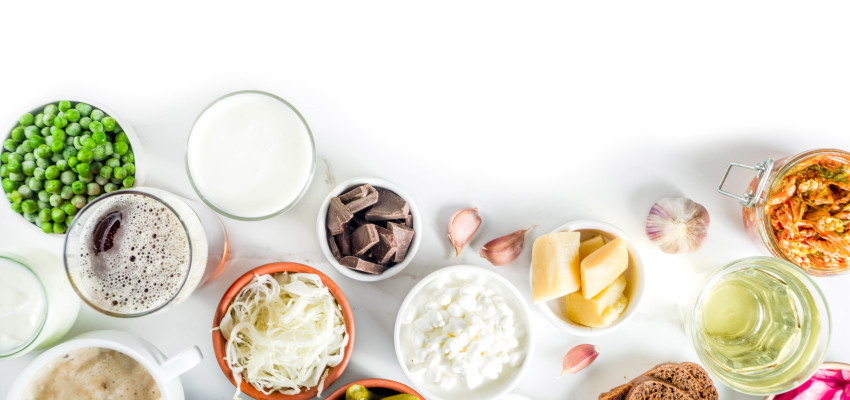By Sheridan Wimmer on May 13, 2019
The Gut Reaction
Learn how to maintain a healthy microbiome

Heartburn, nausea, indigestion, upset stomach…we’ll stop there. You likely know the Pepto-Bismol® jingle and reasons why we keep the pink liquid in our fridges or cupboards. When your stomach hurts, it’s hard to have a normal day.
The human body is made up of approximately 100 trillion bacteria and other microbes, which is collectively known as the microbiome. Science has started an uptick in researching the microbiome and how the bacteria in our bodies affect our health.
“With an increase in science in this area, we’re learning more about how things we eat and touch affect how we feel,” Karen Hanson, dietitian for the Johnson County Department of Health and Environment, says. “And while we sometimes think of bacteria in a negative connotation, we also know some bacteria are actually healthy and important for our health in many ways.”
A healthy gut microbiome controls gut health by communicating with the intestinal cells, digesting certain foods and preventing disease-causing bacteria from sticking to the intestinal walls. An imbalance of unhealthy and healthy microbes in the intestines may contribute to weight gain, high blood sugar, high cholesterol and other disorders.
According to the U.S. Department of Health and Human Services, 60 to 70 million people are affected by digestive diseases. While medication helps with stomach issues, you can be more proactive about making your gut healthier with a few tips.
1. Include fermented, probiotic-rich foods
“Probiotics are good bacteria found in foods and help with digestion,” Hanson says. “The good bacteria are also major immune boosters. The more probiotics in your gut and along your digestive tract, the harder it is for the bad bacteria and viruses to get in.”
What you should eat:
• Yogurt, with live active cultures
• Sauerkraut, refrigerated type
• Kefir, a drinkable yogurt-type dairy product
2. Eat a wide and diverse variety of foods
“Legumes, beans and fruits and vegetables contain a lot of fiber and can promote the growth of healthy Bifidobacteria,” Hanson suggests. “Different types of bacteria, as well as greater amounts of good bacteria, is an indicator of a healthy gut.”
3. Eat prebiotic foods
Not to be confused with probiotics, prebiotics are non-digestible ingredients in foods used to spur the growth of probiotic bacteria in the body.
A few good examples:
• Artichokes
• Bananas
• Asparagus
• Oats
• Apples
4. Eat whole grains
“Whole grains contain fiber and beneficial carbohydrates like beta-glucan, which are digested by gut bacteria to assist with weight control, reduce cancer risk, diabetes and gastrointestinal disorders,” Hanson says.
5. Eat foods rich in polyphenols
A few good examples:
• Red wine
• Green tea
• Dark chocolate
• Olive oil
• Whole grains
6. Take a probiotic supplement if you are concerned your diet isn’t doing the trick
Probiotics can help restore the gut to a healthy balance after illness or antibiotic treatment.
7. Take antibiotics only when necessary
“While we know antibiotics are needed when we have certain illnesses, they can also kill bacteria — both good and bad — in the gut microbiome,” Hanson says.
Before you pop another Tums® or take another swig of “the pink stuff,” think about how you can be actively improving your gut’s microbiome through diverse, healthful eating habits.


